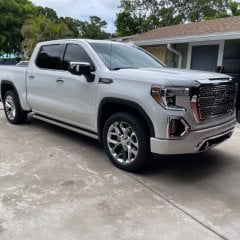2015 Silverado 5.3 Slip yoke clunk ?
-
Similar Content
-
6L90 TCC failure at 50,000 miles. First one failed at 25,000.
By s10dragracer888,
- torque converter
- 6l90
- (and 8 more)
- 0 replies
- 528 views
-
4l80 New torque converter slip 2002 Silverado 2500
By Abel Wickham,
- torque converter
- slip
- (and 3 more)
- 3 replies
- 419 views
-
- 10 replies
- 1,734 views
-
- 5 replies
- 1,589 views
-
- 3 replies
- 2,958 views
-
-
Recently Browsing 0 members
- No registered users viewing this page.
-
Forum Statistics
246k
Total Topics2.6m
Total Posts -
Member Statistics
-
Who's Online 15 Members, 1 Anonymous, 932 Guests (See full list)


















Recommended Posts
Archived
This topic is now archived and is closed to further replies.